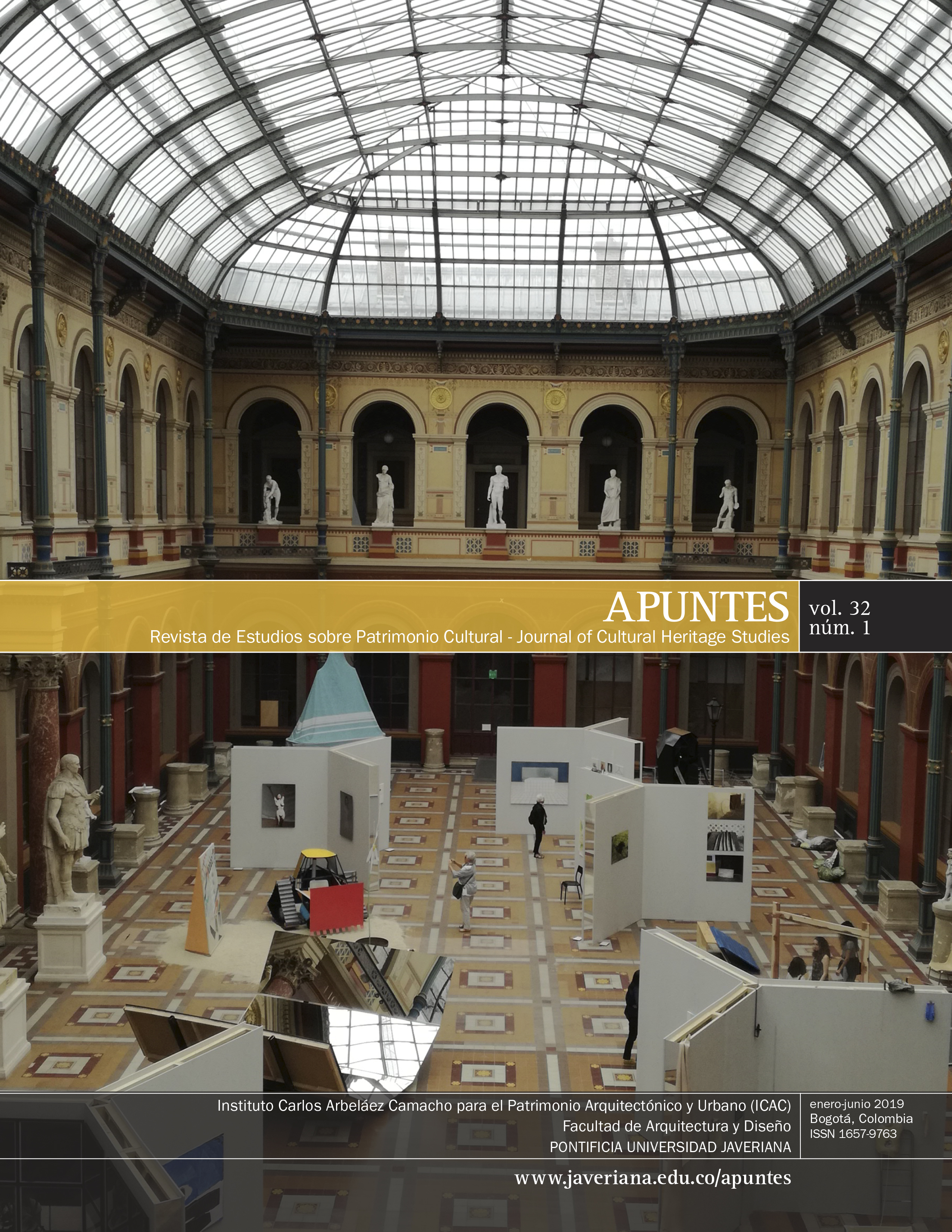Abstract
The basic challenge in this research is the construction of the term “Pyric Vulnerability”. In spite of the huge information background dealing with fire rules and regulations, the estimation of the vulnerability regarding the inability
to control a fire is still a situation to delve into. This is due to the fact that the estimation requires knowing how the affected parties would work in scenarios of fire disasters. The methodology used herein is based on the application
of the Cartesian method to both the theoretical and practical research. The theoretical construction is thus suitable for application, in this case, to the urban cultural heritage that may undergo irreparable losses. The case for study,
the fire in Salamina-Caldas in 2017, evinced the high level of vulnerability that this heritage has today. Based on this, a conclusion is drawn regarding the need to set out special protection measures for this kind of cultural assets.
The strands of research proposed for future studies include the pyric vulnerability methods, pyric micro-zoning, pyric resilience, and residual risk.
Ardió la Calle Real de Salamina. (2017, 7 de abril). La Patria, p. 1.
Barbat, A., Caicedo, C., Canas, J. A., y Aguiar, R. (1994). Vulnerabilidad Sísmica de Edificios. Barcelona: CIMNE. Recuperado de https://www.researchgate.net/publication/271586451_Vulnerabilidad_sismica_de_edificios/download
Cardona, O. (2001). La Necesidad de Repensar de Manera Holística Los Conceptos de Vulnerabilidad y Riesgo: Una Crítica y una Revisión Necesaria para la Gestión. Ponencia presentada en el International Work-Conference on Vulnerability in Disaster Theory and Practice. Wageningen, Holanda.
Cardona, O. (2002). Estimación Holística del Riesgo Sísmico Utilizando Sistemas Dinámicos Complejos. Barcelona: Universidad Politécnica de Cataluña.
Cirvini, S., y Manzini, L. (2016). Diagnóstico y evaluación de las viviendas en el patrimonio arquitectónico de Mendoza, Argentina. Apuntes, 29(1), 46-61. http://dx.doi.org/10.11144/Javeriana.apc29-1.devp
IDEAM. (2011). Protocolo para la realización de mapas de zonificación de riesgos a incendios de la cobertura vegetal - Escala 1:100.000. Bogotá: Autor.
Jorquera, N. (2014). Método integral de evaluación del riesgo sísmico del patrimonio arquitectónico menor. Apuntes, 27(1), 52-63. http://dx.doi.org/10.11144/Javeriana.APC26-2.mies
Ministerio de Ambiente, Vivienda y Desarrollo Territorial. (2010). Reglamento Colombiano de construcción sismo resistente NSR-10, Segunda actualización. Bogotá: Asociación Colombiana de Ingeniería Sísmica, AIS.
Niglio, O., y Valencia, W. (2014). Reducción del riesgo sísmico para el patrimonio arquitectónico. Una comparación entre experiencias de Colombia y Japón. Apuntes, 27(1), 106-123. http://dx.doi.org/10.11144/Javeriana.APC27-1.rrsp
Rueda, L., y Plata, W. E. (2016). Hacia un estado del arte de la historia urbana en Colombia: el caso de Bogotá. Apuntes, 29(2), 56-69. http://dx.doi.org/10.11144/Javeriana.apc29-2.eahu
Salazar-Marulanda, C., y Duque Cañas, J. (2014). Irrecuperabilidad del patrimonio en riesgo. El caso de la capilla de La Enea. Apuntes, 27(1), 20-35. http://dx.doi.org/10.11144/Javeriana.APC27-1.iprc
Apuntes is registered under a Creative Commons Attribution 4.0 International Public License. Thus, this work may be reproduced, distributed, and publicly shared in digital format, as long as the names of the authors and Pontificia Universidad Javeriana are acknowledged. Others are allowed to quote, adapt, transform, auto-archive, republish, and create based on this material, for any purpose (even commercial ones), provided the authorship is duly acknowledged, a link to the original work is provided, and it is specified if changes have been made. Pontificia Universidad Javeriana does not hold the rights of published works and the authors are solely responsible for the contents of their works; they keep the moral, intellectual, privacy, and publicity rights.
Approving the intervention of the work (review, copy-editing, translation, layout) and the following outreach, are granted through an use license and not through an assignment of rights. This means the journal and Pontificia Universidad Javeriana cannot be held responsible for any ethical malpractice by the authors. As a consequence of the protection granted by the use license, the journal is not required to publish recantations or modify information already published, unless the errata stems from the editorial management process. Publishing contents in this journal does not generate royalties for contributors.



